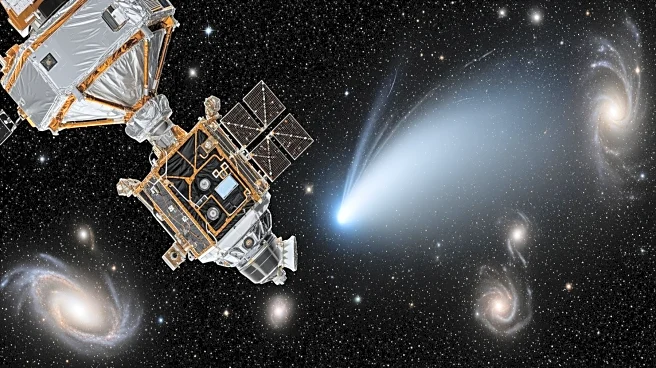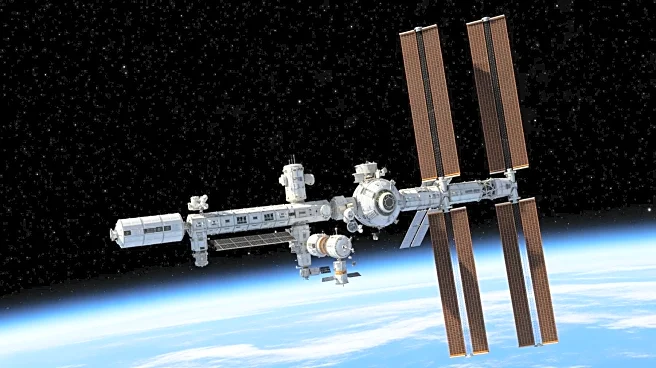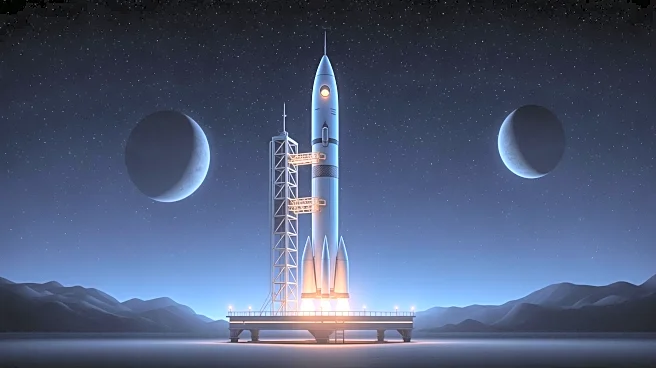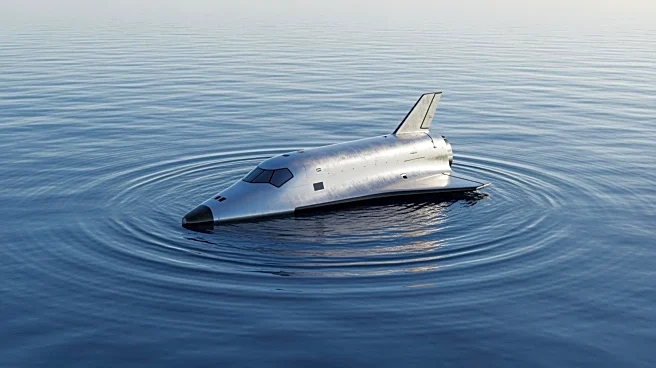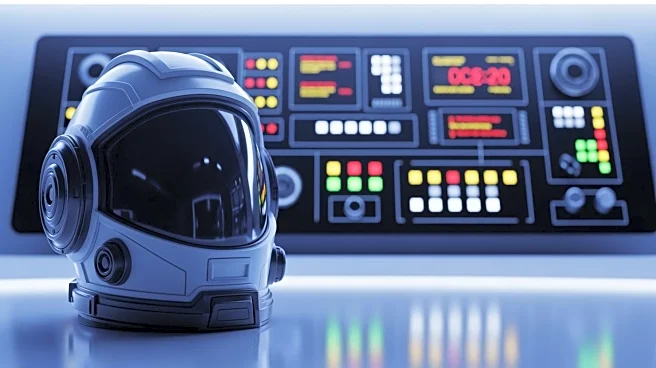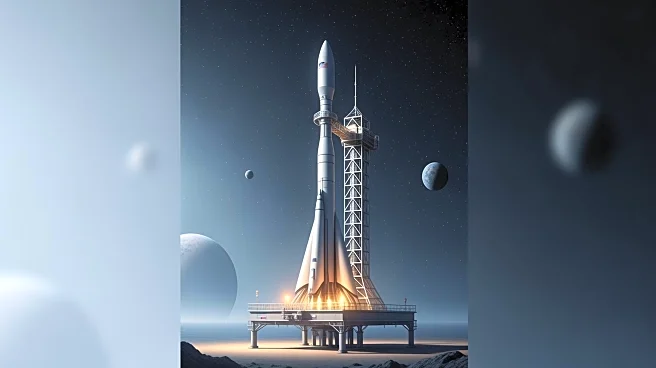What's Happening?
NASA is investigating a new concept for nuclear propulsion that could revolutionize space travel, particularly missions to Mars. The centrifugal nuclear thermal rocket (CNTR), developed through a NASA-funded
study led by Dean Wang of Ohio State University, utilizes liquid uranium fuel spinning within a rotating cylinder to generate heat and thrust. This design aims to enhance the fission process, producing higher temperatures and speeds than traditional chemical rockets. The CNTR could potentially reduce travel time to Mars from years to months, offering a safer and more efficient means of space exploration. The technology remains theoretical, but Wang's team hopes to achieve engineering readiness within five years.
Why It's Important?
The development of nuclear propulsion technology could significantly impact the future of space exploration. By reducing travel time to Mars, astronauts would face less exposure to cosmic radiation, improving safety on long-duration missions. This advancement could open new routes not only to Mars but also to asteroids and other distant destinations, expanding human reach within the solar system. The CNTR's efficiency promises to double the performance of earlier nuclear designs and quadruple the thrust of chemical rockets, potentially transforming how space missions are conducted. Successful implementation of this technology could mark a pivotal shift in exploration capabilities, making distant worlds more accessible.
What's Next?
If the CNTR technology progresses from theoretical design to practical application, it could lead to mid-century missions featuring nuclear-powered spacecraft routinely traveling through the solar system. NASA and its partners may focus on achieving engineering readiness within the next five years, paving the way for future deployment. The success of this initiative could prompt further investment and research into nuclear propulsion, potentially influencing international space exploration strategies. As the technology advances, stakeholders in the aerospace industry, including government agencies and private companies, may need to adapt to new possibilities and challenges presented by nuclear-powered space travel.
Beyond the Headlines
The CNTR concept represents a significant leap in space travel technology, merging nuclear physics with modern engineering. This development could overcome one of exploration's greatest barriers: distance. By offering faster and safer journeys, the CNTR design not only enhances mission efficiency but also promotes sustainable exploration practices. The potential for nuclear propulsion to transform space travel raises ethical and regulatory considerations, particularly regarding the use of nuclear materials in space. As the technology evolves, discussions around safety protocols, environmental impact, and international cooperation will become increasingly important.


